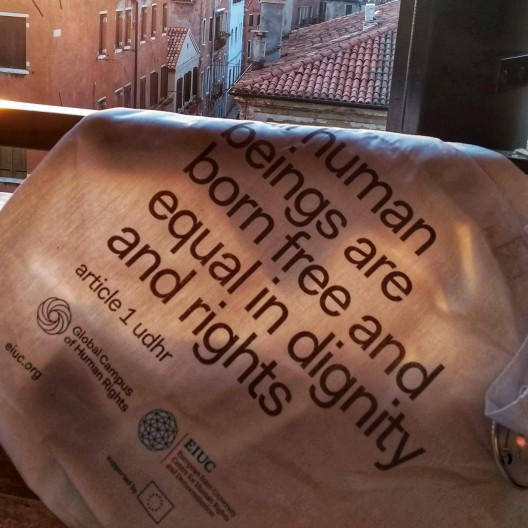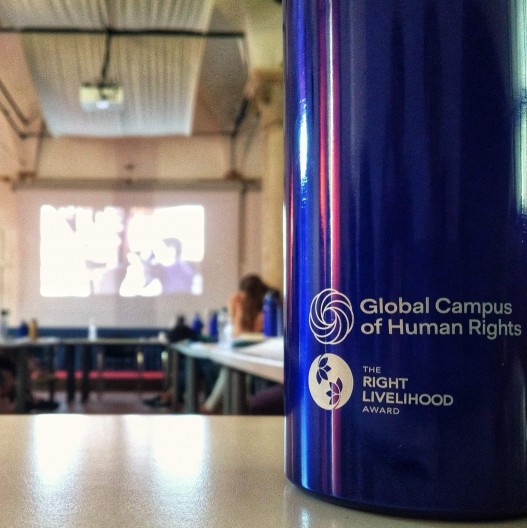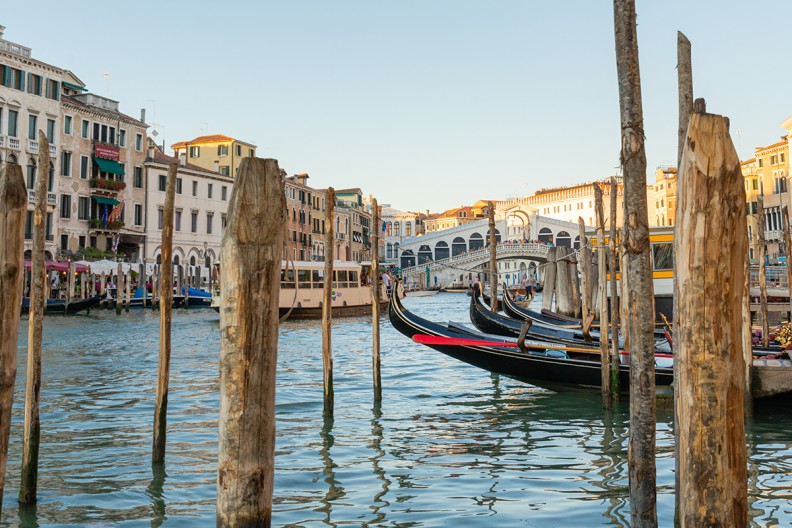Travelling back from Venice, being on the road again, provides an opportunity to interact and talk to people from various backgrounds in a relaxing atmosphere. You meet both fellow travellers and locals – but regardless of their origins, all of them emphasise the importance of human rights. This common spirit reflects the motivation of the participants in the summer school run by the Global Campus on Human Rights at the monastery of San Nicolò, Venice. As a PhD student focusing on the history of human rights, I am mainly interested in the visualisation of human rights and the impact creators are aiming for with their films or photographs.
The aim of the summer school, organised by Picture People and the Global Campus of Human Rights, was to link theory and practice as two intertwined, inseparable dimensions of the same whole. Not only were the lectures full of practical examples, they were also given by both academics and practitioners, adding real value to the practices of cinema, human rights and advocacy from a variety of perspectives. The central thread was documentary filmmaking in the area of human rights. This practice was supported and encouraged in the early days by UNESCO. Unfortunately, despite the recognition of the right to cultural life in the Universal Declaration of Human Rights (UDHR), directors and filmmakers are only too aware of the fragility of their sector, owing to the ubiquitous economic approach to cultural practices in today’s society.
The summer school began with a short introduction to the UDHR by Prof. William Schabas. The declaration may be well known in theory but it is surprising how many of us are not fully familiar with the rights that are protected by it. Yet we also have to keep in mind that these rights are continuously evolving and moving forward. The articles of the UDHR were illustrated by short extracts from different films, and the presentation was followed by lively discussions. The interdisciplinarity of the summer school was particularly noticeable. The participants – filmmakers, academics, lawyers, etc. – all had a different point of view on the images shown. This made us aware of the responsibility that makers of images hold and the different impact these images have among different audiences. It is impossible to predict how images will be perceived by the public.
The talk by Prof. Emma Sandon focused on the representation of the humans in human rights films. She gave us a short introduction to the Human Rights Film Network Charter, which lays down a number of criteria for films about human rights: “Human Rights films should be ‘truthful’. They should inform the viewers on human rights issues and aspirations, and should not intentionally misrepresent the facts or the views or words of those portrayed.”1 After a further short exploration of the criteria, Prof. Sandon looked at the representation of the subject, the narration, the style and the production context of human rights films. At the end of the workshop, she asked a number of questions to encourage discussions, and the participants broke into small groups to analyse fragments of a few films such as La noire de… by Sembene Ousmane and Fuoco a mare by Gianfranco Rosi.
Towards the end of the afternoon, the speakers and Nick Danziger assembled for a live-streamed panel with Askold Kurov, director of the new documentary film The Trial. In his film, he advocates for the release of political prisoner Oleg Sentsov, a Ukrainian film director and Sakharov laureate who was sentenced to 20 years in prison for terrorism and arms trafficking.2 Despite multiple international requests and pressure for his release, it was only recently – during the summer school and as the documentary film The Trial was screened at the Venice Film Festival – that the press reported that Oleg Sentsov would be released by the Russian authorities, along with a number of other prisoners, in a swap with political prisoners held by the Ukrainian authorities. There could be no better illustration of the power of the image.
Theory and practice are interlinked. The photographer, videographer and well-known director Nick Danziger gave a talk about visual storytelling. As we know, the best stories are supported by a strong, relatable character. We explored the first steps of visual storytelling, with illustrations mainly from Nick Danziger’s own material, as commissioned by humanitarian organisations. After a first section on the different building blocks needed for a good story, we explored the second stage of storyboarding in small groups. Using pencil and paper, we gave free rein to our creativity. Then the real work began, as we started piecing together on our own visual story, aiming to provide a good pitch at the end of the summer school.
A further workshop was run by Kelly Matheson from WITNESS, an organisation that provides training and support by using film as a tool for advocacy, education and evidence. While the first two uses were discussed in previous workshops, Kelly Matheson focused on the legal dimension. Videos used as evidence in the trial of Thomas Lubanga at the International Criminal Court to prove his use of child soldiers were shown. Kelly Matheson also explained how to make videos that can serve as evidence of human rights violations.
While it is important to produce videos showing breaches of human rights, we must never forget that human rights violations are connected to violations of human dignity. Prof. Koen De Feyter asked us to share our thoughts on “freedom of expression and censorship”. He first looked at freedom of artistic expression, before continuing after the break with the tension between films of expression and films of religion. Both topics gave rise to lively discussions in the group, with participants questioning not only the role of the state as intervener but also the role of filmmakers as creators of narratives.
The final lecturer at the summer school was Christopher Hird, a well-known film producer. He focused on the production and desired impact of documentaries. Impact relies on multiple factors and, as described above, will always be subjective. Nevertheless, it is important to try to predict the impact your work will have by researching your topic, target audience, funding and distribution channels. After all, this is what human rights advocacy filmmaking is about: making an impact.
The time remaining between the lectures was used to continue with the creation, research and pitch of our visual story. In my group of four, composed of a graphic illustrator, a film director, a gender specialist and a researcher, we created a visual storyline for a short documentary film that highlights forced child marriages in Roma communities in Montenegro and aims to break the patriarchal tradition of forcing young women into marriage. Our different backgrounds maximised the peer-to-peer learning approach and made our pitch successful.
As well as attending the lectures and workshops, we also went to see some of the films at the Venice Film Festival. The Perfect Candidate, The Kingmaker and La llorona are only a few examples of films preselected by the summer school. All of them were related to human rights issues. For some of them, the summer school managed to organise different talks with the directors and producers afterwards so that they could explain why they made certain choices of scenes of what to show to the public.
As I look back on the summer school, I can say with no hesitation that it was a very intense, productive experience which gave me the opportunity to meet a number of people from varying backgrounds, all of whom are working towards one mutual goal: advocating for human rights through the visual image. It is important to remember that a message will only reach a target audience if the images are adapted to suit that audience. Reflecting upon the aim and impact of the film should be a continuous part of the creative process. With this in mind, I can say that my participation not only encouraged me to continue with my research; it also gave me access to wide-ranging information and networks on human rights. On top of that, it also helped me to interpret the various messages spread by UNESCO in the early days of efforts to promote and implement human rights through education, a core element of my PhD.






